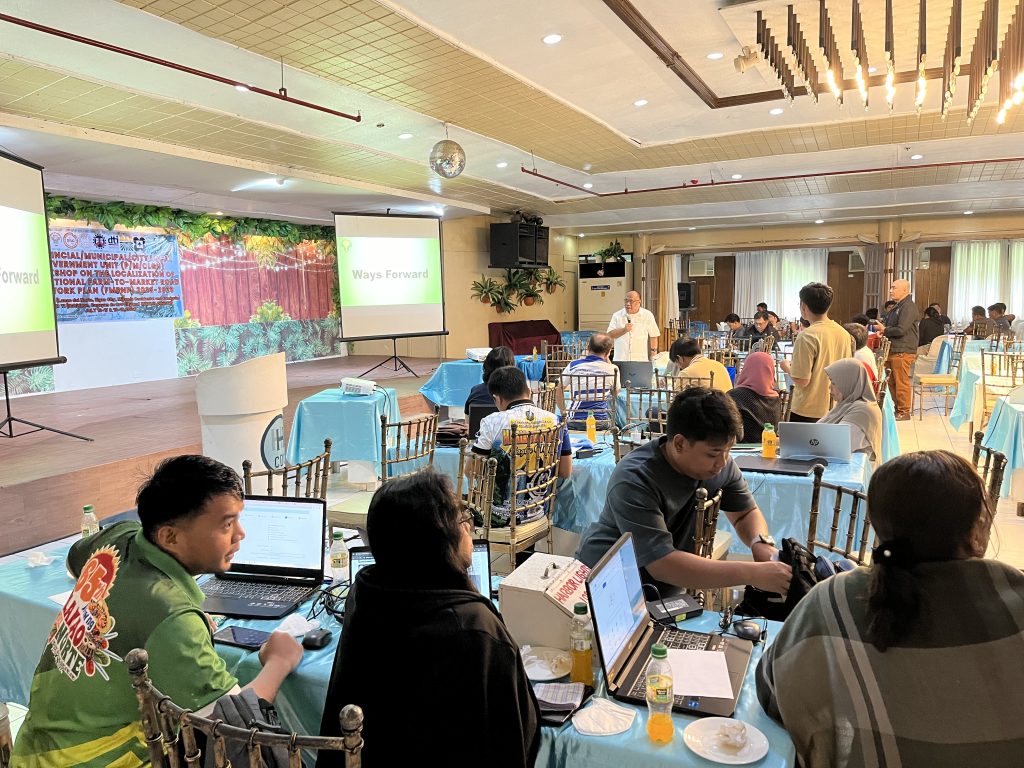
BAFE director, Engr. Ariodear C. Rico highlights that FMRs aid in the upliftment in the lives of farmers and fishers.
CAGAYAN DE ORO CITY – Northern Mindanao local government units (LGUs) are eyed to come up with a localized National Farm-to-Market Road Network Plan (FMRNP) for 2023-2028, emphasizing their key role in boosting the agricultural and fishery sector in their respective localities.
Of which, FMRs are regarded as imperative interventions to address challenges on the agricultural supply chain by connecting production areas to markets, and enhancing the efficiency of transporting agricultural products.
Organized by the DA-Bureau of Agriculture and Fisheries Engineering (BAFE) and its field implementing arm, the Regional Agricultural Engineering Division (RAED) of the Department of Agriculture – Regional Field Office 10 (DA-10), a two-day workshop is staged in batches, from July 16-19, here, to be guided on the crafting of the said plan.
Gathered are the local chief executives and representatives from the offices of the provincial/municipal/city agriculturist, planning and development coordinator and engineer regionwide, including the involved agencies – DA, DPWH, DILG, DOT, DTI, DAR and NEDA – in the formulation, implementation, and updating of the FMR network plan.
This initiative is in response to the presidential directive for the DA to strengthen its coordination with the concerned offices to identify new FMR projects, and prioritize existing FMRs that need to be rehabilitated.
“Sa pamamagitan nito [FMRNP], atin pang pagtutulungan na magbukas nang mas maayos, mas mabilis at mas epektibong koneksyon mula sa bukirin hanggang sa pamilihan. Ang FMRNP hindi lamang tungkol sa mga kalsada kundi isa itong susi upang mapataas ang antas at kabuhayan ng ating mga magsasaka [at mangingisda].” BAFE director, Engr. Ariodear C. Rico remarked.
The significance of the activity is also reinforced by DILG Undersecretary for Project Development Management, Atty. Odilon L. Pasaraba, who stressed, in his video message, the vital importance of FMRs in ensuring food security and economic growth. “By boosting mobility and broadening the reach of produce, such infrastructure projects benefit both farmers and consumers.”
Highlighted during the workshop is the GeoAgri, an interactive web mapping application that displays information on FMR projects, including a geo-mapping visualization of roads and its connectivity. It is used to automate the prioritization of proposed FMRs based on set criteria, warranting that resources are apportioned to the most impactful FMR projects.
Prioritization indicators include the estimated road influence area, agricultural potential indicators, present road condition, number of beneficiaries, average daily traffic and climate change resiliency or adaptation.
Participants have likewise undertaken hands-on activities on the data build-up/updating of network map by province/district/city/municipality in agricultural and fisheries production areas, coastal landing sites, postharvest facilities and markets, followed by a presentation of select municipalities for their initial output.
Importantly, the key components of the local FMRNP was outlined such as the situational analysis, targets and objectives, plan implementation, analysis and recommendations, which will later form part of the regional FMRNP.
As ways forward, the RAED of DA-RFO 10 shall consolidate these local FMRNP into the regional FMRNP. Such plans shall also provide the investment plan from 2024-2028 for funding, while the BAFE shall consolidate the regional FMRNP investment plans into a national FMRNP investment plan.
Capping off the discussions, the Civil Service Commission – X also reiterated the significance on the strengthening and establishment of the Agricultural and Biosystems Engineering groups of the LGUs per DA-DBM-CSC-DILG JMC No. 2, series of 2020 as pivotal to modernizing and mechanizing the country’s agriculture and fishery sector.
From 2016 to 2022, the DA-10 through its FMR Development program has already completed 211.31 kilometers of FMRs amounting to PhP3.351-billion for a total of 364 projects, in partnership with the Department of Public Works and Highways and the different LGUs.# (JLO)
